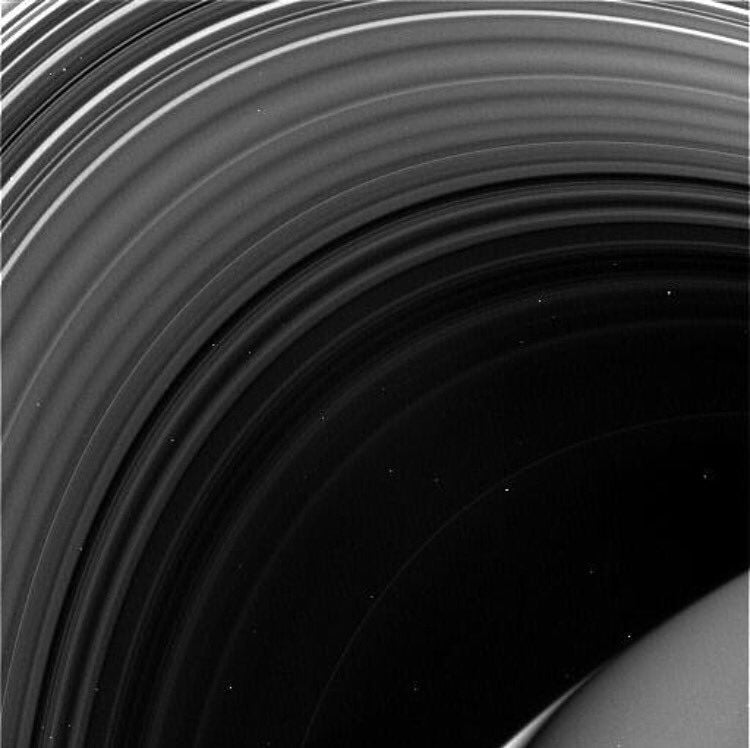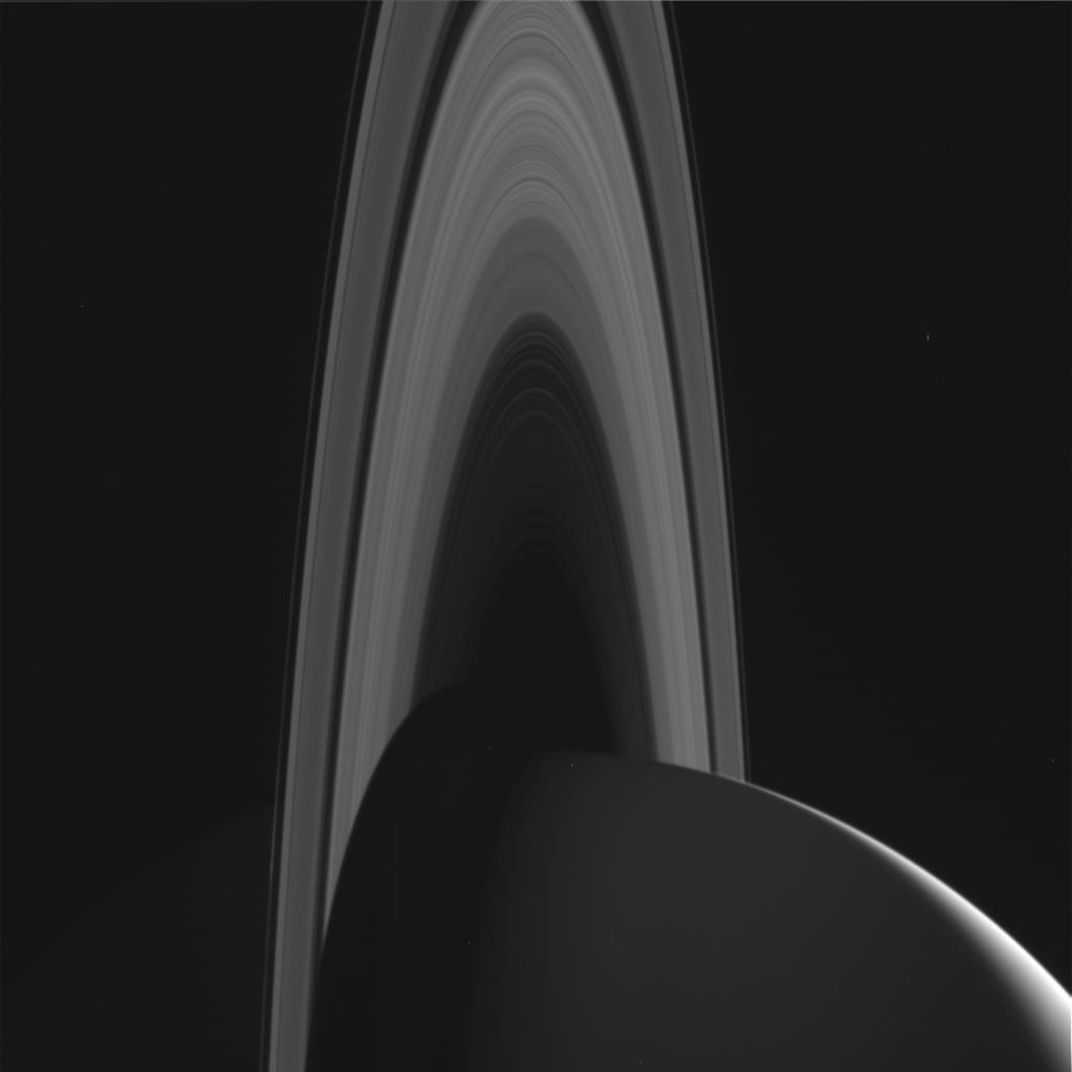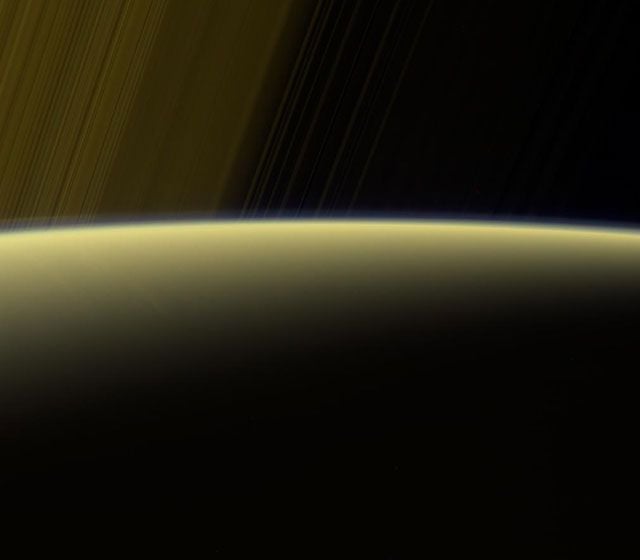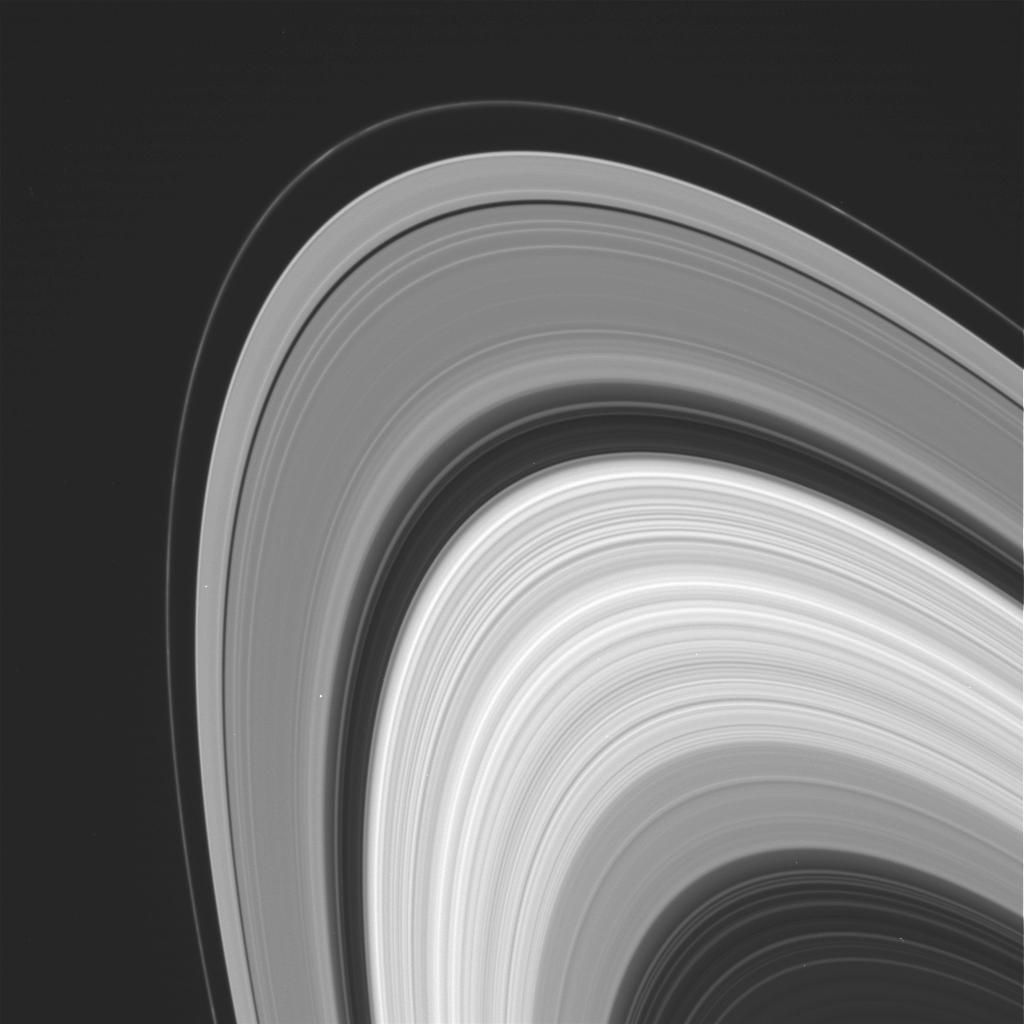What Cassini’s Daring Dives Have Taught Us About Saturn
Before the probe’s final plunge into Saturn’s atmosphere, here’s a look back at what we’ve learned so far
/https://tf-cmsv2-smithsonianmag-media.s3.amazonaws.com/filer/a1/81/a181b38f-0b8e-43c0-8a7a-30295d361dc0/first_dive_rings.jpg)
Friday morning, after 20 years in space, the Cassini probe will plummet into Saturn’s atmosphere, breaking into pieces. It’s been a wild ride. Not only did the probe give us stunning images of Jupiter, Saturn and many of Saturn’s moons, it showed researchers that two of Saturn’s moons, Titan and Enceladus, may be able to support life.
As the craft runs out of fuel, Cassini isn't going down without one more mission. Since April, Cassini has made a series of six-day-long swoops between Saturn and its massive collection of rings, gathering new readings and images. Called the Grand Finale, the probe has completed 21 swings so far. Its last dive will be the final curtain of the mission when the craft meets its fiery end, burning up in Saturn’s atmosphere at 45,000 miles per hour.
Though the dive is primarily intended to prevent contamination of moons in a system that may support life, it will still collect data before it loses connection with Earth. “The Grand Finale is a brand-new mission,” Linda Spilker, Cassini project scientist, said during a news conference. “We're going to a place that we’ve never been before … and I think some of the biggest discoveries may come from these final orbits.” The data transmission from the dive will stream live tomorrow between 7 and 9 A.M. Eastern.
It will take some time to analyze the data from all of those final dives, but here’s some of what we’ve learned—and seen—so far.
First Dive: April 23-29
On April 21, 2017, Cassini conducted its final flyby of Titan, using the moon’s gravity to put it on course for it’s first dive. The plummet into the 1,500-mile wide gap between Saturn’s upper atmosphere and its ring system was something of a gamble. Researchers weren’t sure how much dust and debris filled the gap. Even though the craft was angling its dish-like high-gain antenna to use as a shield, there was still the possibility that debris could cripple Cassini.
But even if the worst occurred, Cassini was in position to eventually provide some precious data. “We’re guaranteed to end up in Saturn's atmosphere in September...[Even] if we get hit by a particle that disables the spacecraft,” Cassini deputy project scientist Scott Edgington told Ian O’Neill at Space.com before the first dive.
Cassini came through that first dance just fine, giving researchers data on the particle sizes in the gap so they knew what to expect next. It also came out with some cool images, including the “porthole” video of Saturn’s north pole above, captured over the course of an hour.

Second and Third Dives: April 29 - May 12
That first dive was something of test run. As The Grand Finale missions continued, NASA tweaked the camera settings and began focusing on Saturn’s rings, creating incredible close-ups on its second plunge. During it’s third dive, Cassini again focused on Titan, where it observed the longest and brightest clouds ever observed in the planet’s thick atmosphere.
"The images from the first pass were great, but we were conservative with the camera settings," Andrew Ingersoll of the Cassini imaging team said in a press release. "We plan to make updates to our observations for a similar opportunity on June 29 that we think will result in even better views."

Into the D-Ring
On its sixth dive, beginning on May 25, Cassini started the first of four dives passing through the inner edge of Saturn’s D rings, the rings closest to the planet. For six minutes while passing through the plane of the ring, the probe was at risk of colliding with ring particles. Cassini came through unscathed, and performed the feat again on dives number 7, 11 and 12. The risks were worth it, giving the craft new views of the A ring and F ring. During dive number 7 Cassini caught a great image of density waves in the B ring above.

Eighth Dive: June 7-13
On this dive, Cassini did measure the pull of gravity to help calculate the shape and the mass of its rings. It also produced the awesome image above, taken between the seventh and eight dives.

Fourteenth Dive: July 16-22
By its fourteenth time through the Saturnine gap, scientists were ecstatic about Cassini’s performance and the trove of information flowing in. “The data we are seeing from Cassini's Grand Finale are every bit as exciting as we hoped, although we are still deep in the process of working out what they are telling us about Saturn and its rings,” Spilker said in a NASA press release in July.
Magnetometer readings refined measurements of the planet’s magnetic field, showing that it is well-aligned with it’s axis of rotation. Those measurements are also helpful in calculating the exact length of a day on Saturn, which is still not perfectly understood.
The probe also captured the first samples of Saturn’s rings and atmosphere, and its cosmic dust analyzer began beaming back data about the particles it encountered. The probe also captured breathtaking images of Saturn’s cloudscape and rings. For example, it captured the incredible image above, which shows a thin haze above Saturn, the planet's stratosphere.

The Final Five
Cassini’s final five swings through the gap took it within 1,010 and 1,060 miles of the tops of Saturn’s clouds, giving us our closest views yet of Saturn’s upper atmosphere. Using its Ion and Neutral Mass Spectrometer it was directly sampled composition of the region and other instruments measured ammonia. In its final days, Cassini took its last images of Saturn’s north pole and rings, producing pictures like the raw image above. On September 11, it got a gravitational nudge from Titan to put it on course for it’s final plunge.
“As it makes these five dips into Saturn, followed by its final plunge, Cassini will become the first Saturn atmospheric probe,” Spilker says in the press release. “It’s long been a goal in planetary exploration to send a dedicated probe into the atmosphere of Saturn, and we're laying the groundwork for future exploration with this first foray.”